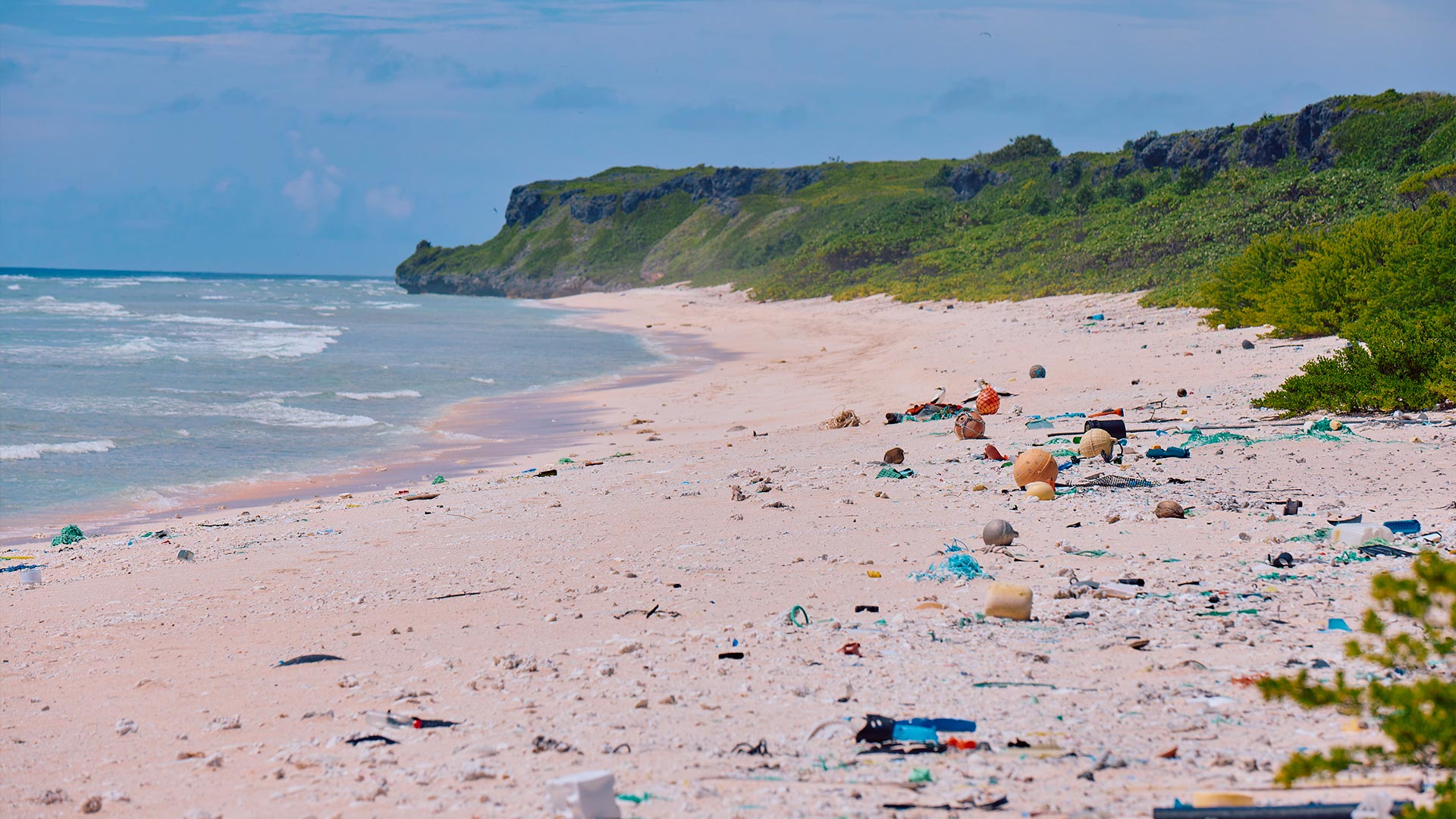
Henderson Expedition: Plastic Odyssey Works to Clean Up the Most Polluted Sanctuary in the World
In the heart of the South Pacific lies Henderson Island, a UNESCO World Heritage Site, but sadly designated as the world’s most polluted island. Its beaches, where tons of waste are dumped, are a striking emblem of the global plastic crisis. The Plastic Odyssey expedition is about to tackle this terrible scourge head-on. The program includes the removal of 6 tonnes of plastic waste from the island, using solutions tailored to the island’s specific needs, and its processing on board the laboratory vessel.
Heading for the South Pacific
In a few days, the Plastic Odyssey vessel and its crew will set sail from Mangareva, an island in eastern French Polynesia, on a unique mission: to clean up the beaches of a deserted island which, although uninhabited, is overflowing with plastic waste.
The aim of the Henderson mission is to remove the 6 tonnes of plastic waste and transform it into useful objects for the inhabitants of the neighbouring islands. The plastic will be crushed, washed and transformed into boards and other objects. These products will be used to make benches, tables and chairs for the Pitcairn Island community, and will also serve as an awareness-raising tool.
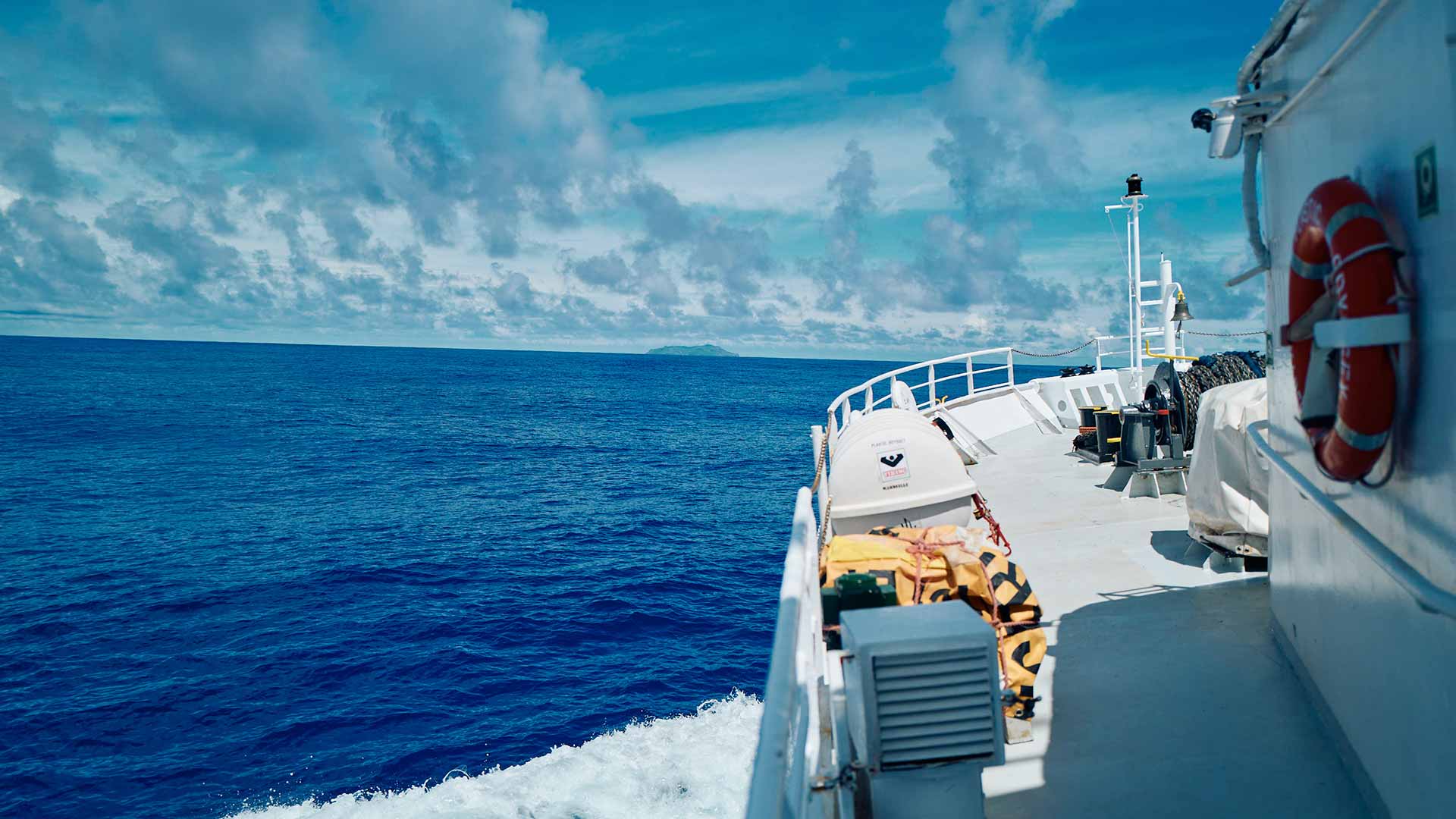
Expedition program
Currently in the middle of the South Pacific Ocean, the Plastic Odyssey vessel left the coast of Panama in early January, where it made its last stopover in Central America. This 20-day journey is only the first step for the crew. Arrival in French Polynesia is scheduled in a few days’ time to prepare for the launch of the Henderson expedition, which will begin on February 6, 2024. For this mission, it will be accompanied by another vessel, a sailing catamaran, which will transport part of the team dedicated to collecting and processing plastic waste once on site.
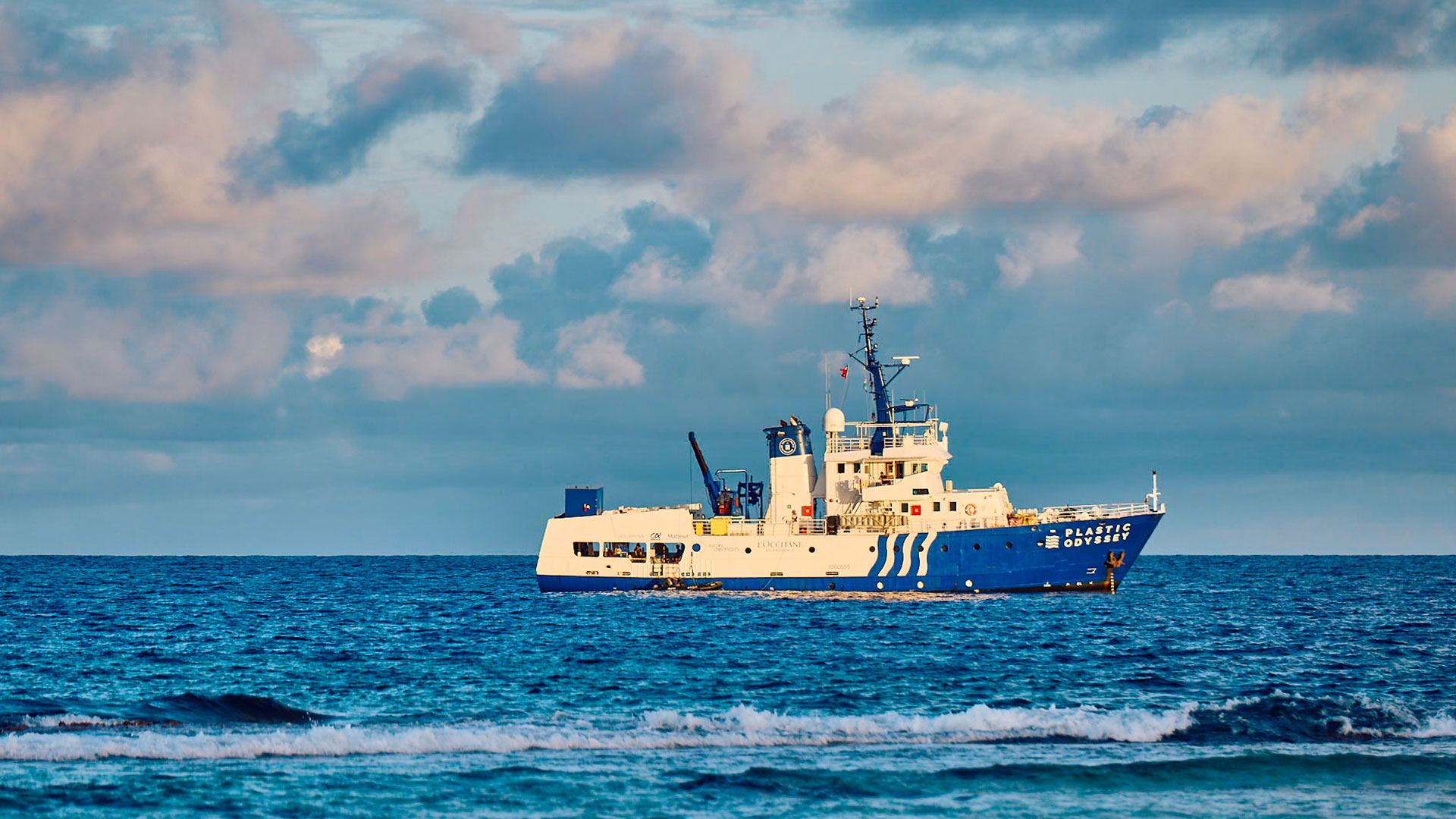
About Henderson Atoll
Henderson Island is a remote and uninhabited elevated coral atoll and the largest of the four islands of the British-governed Pitcairn Islands, an area known for having the clearest visibility in the Pacific Ocean. With its remarkable biological diversity, Henderson is one of the last and among the largest near-pristine limestone islands in the world. Access for yachts and fishing vessels is by permit only and extremely difficult due to the surrounding coral reefs. In addition to their natural beauty, the Pitcairn Islands have had a significant cultural impact. The island chain served as the inspiration for Mutiny on the Bounty and Herman Melville’s Moby Dick. The crew’s launch spot, Mangareva Island, is where the popular Tom Hanks movie Castaway was filmed.
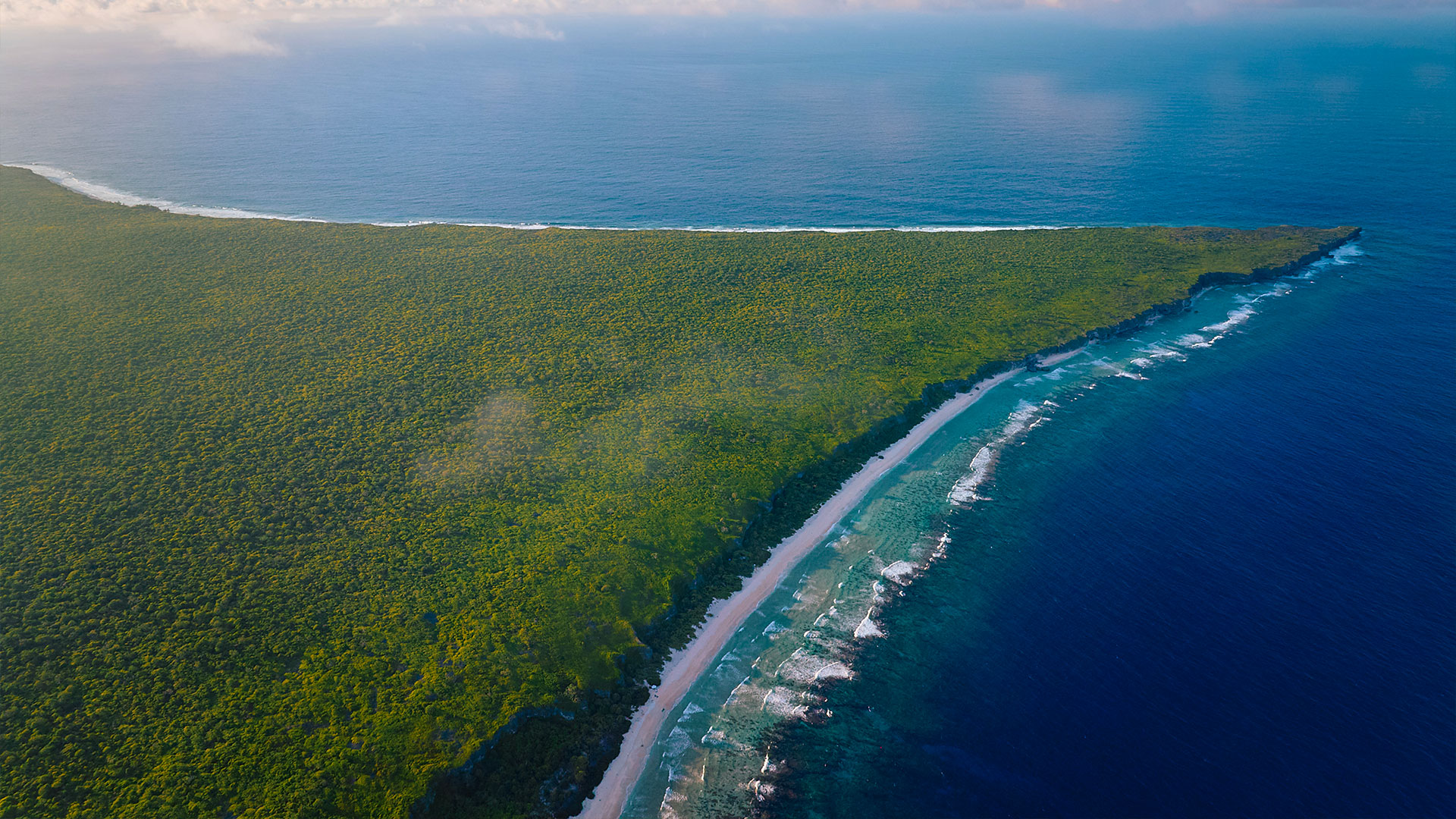
Making the impossible possible
It takes three days at sea to reach the Pitcairn archipelago, of which Henderson Island is a part, from Polynesia. Access to the beach at the eastern end of the island, which is most affected by plastic pollution, is impossible directly from the sea. The island is protected by a coral reef, but the elements are unleashed, making sea passage impassable.
The team therefore planned to use a theoretically more protected beach to the north. The program includes a 30-metre climb up the cliff bordering the beach, then a crossing of the island along a path laid out years ago, where nature has reclaimed its full rights, and finally a descent of the cliff to reach the site to be cleaned up.
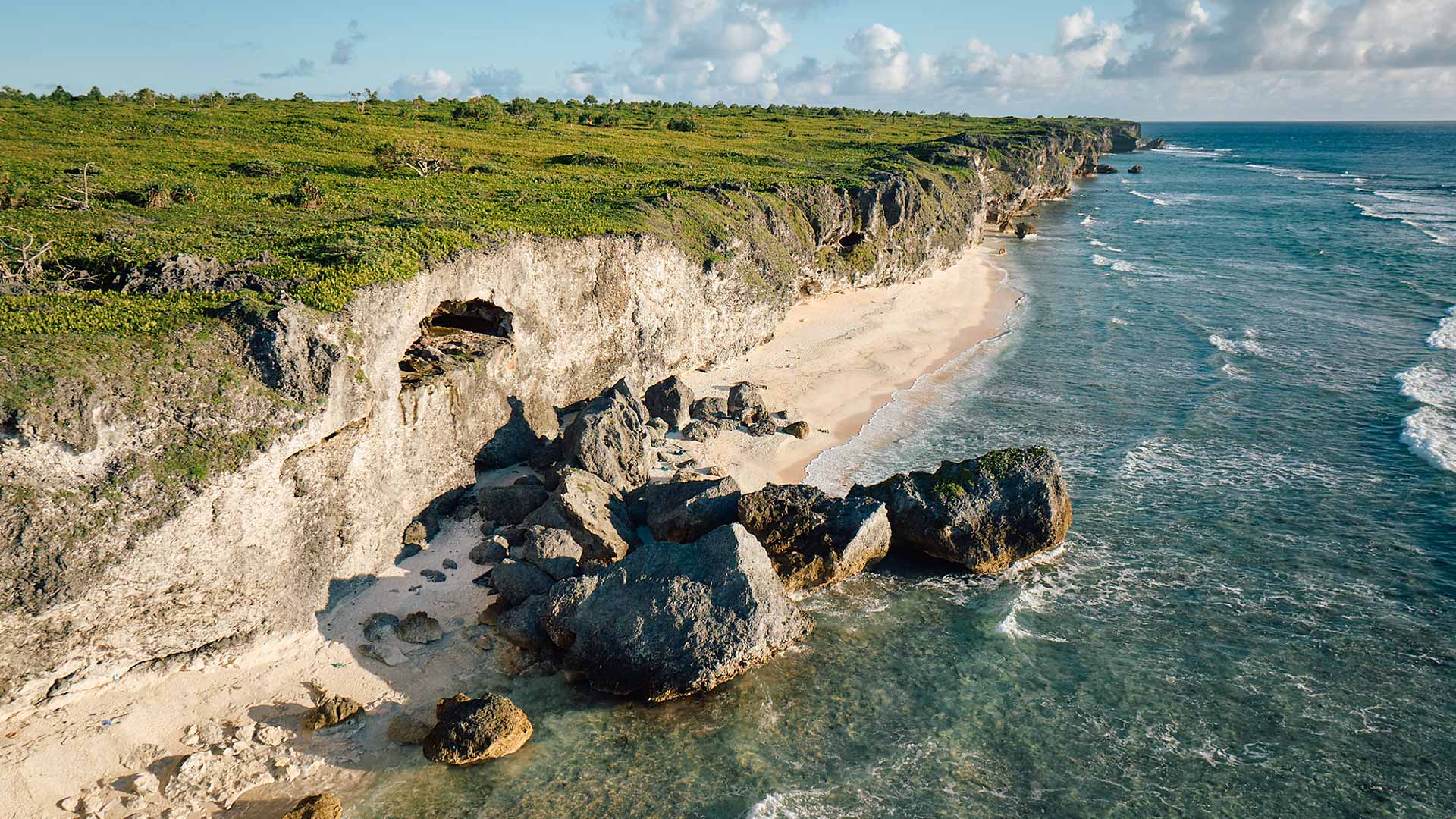
Once on site, the team will set up a camp so that they can work from the beach and remove any garbage. But if access for people is impossible by sea, it’s even more complicated for the tons of waste that have to be removed.
In 2019, an expedition attempted to clean up this beach using a boat directly from its shoreline and turned over in the waves. The team was forced to leave behind the tons of waste they had been collecting for days.
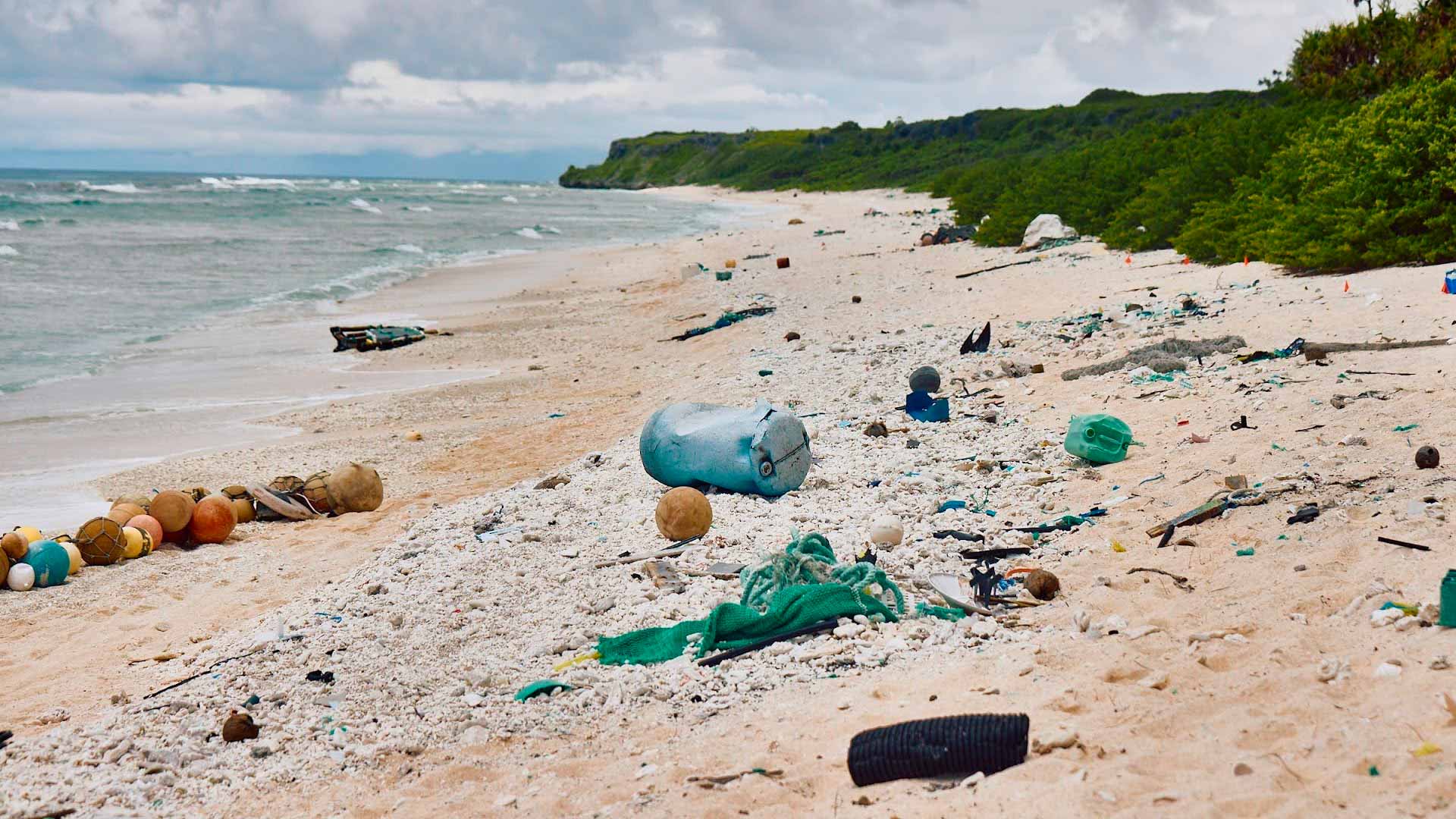
To succeed in this impossible mission, Plastic Odyssey has armed itself with several low-tech solutions adapted to the situation. One of these solutions is completely out of the ordinary. “If waste can’t cross the coral reef, it can fly over it!” explains Simon BERNARD, the explorer behind the project. “We’re going to use a parasailing machine, a technique normally used to transport tourists to beaches, but which we’ve hijacked to get the garbage up high!”.
The team has been preparing the action plan for several months: “We’ve carried out several conclusive tests using different methods, the parachute method but also via a floating platform and a bamboo raft that we’ve built. The challenge will be to succeed in the extreme conditions we’re likely to find once we get there.” explains Simon.

With him, a team of 25 explorers will take part in this unique mission. Comprising several recycling experts, a scientist, an emergency doctor and reporters, this expedition will be shared with as many people as possible to raise global awareness of plastic pollution.
Follow the expedition live on Plastic Odyssey’s social networks from February 6!
Useful links:
- the platform dedicated to this mission: henderson.plasticodyssey.org
- the press kit dedicated to this Henderson mission
Contacts:
Photo-reports, video content or interview requests should be sent to: press@plasticodyssey.org
Partnerships:
partnerships@plasticodyssey.org
